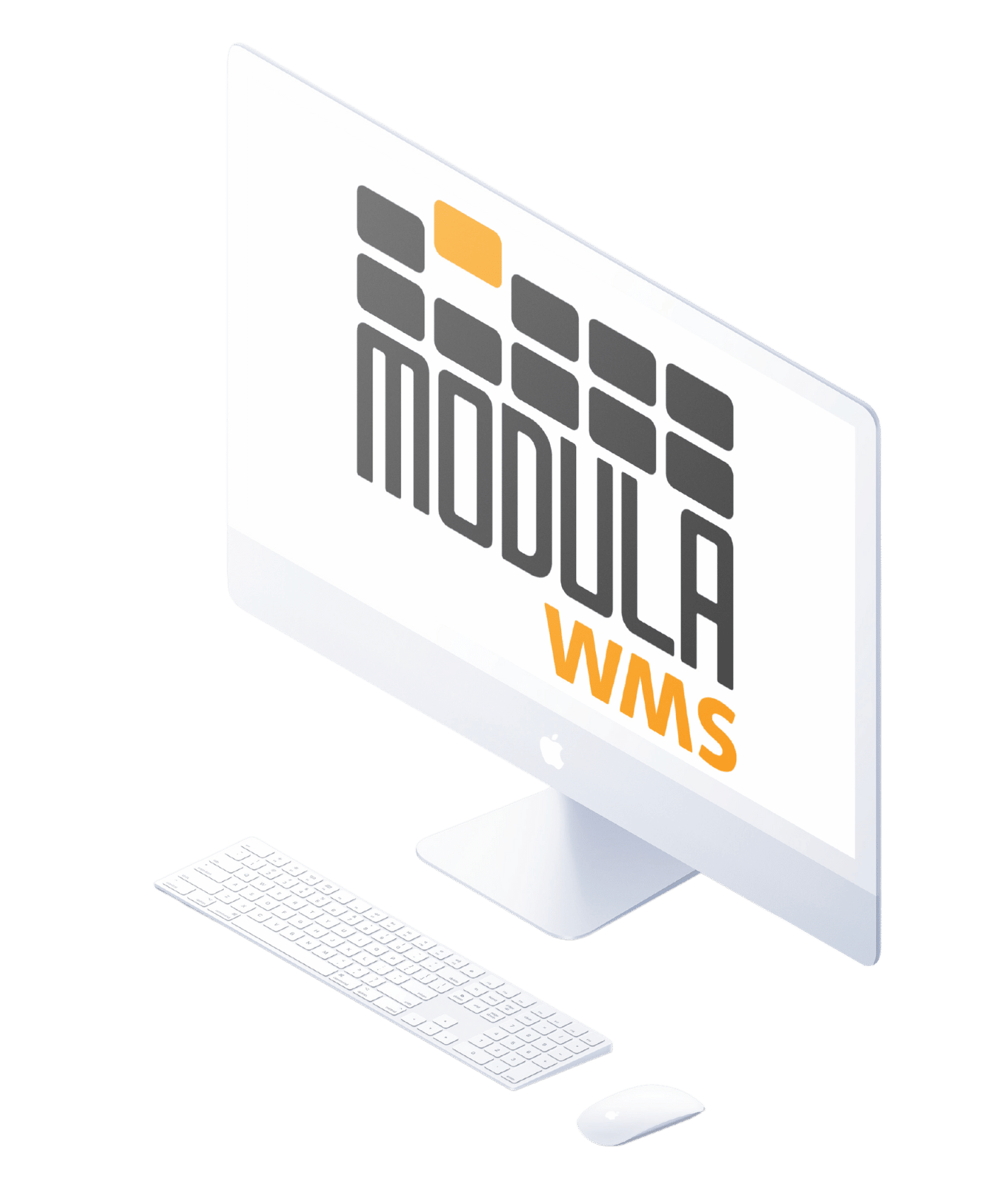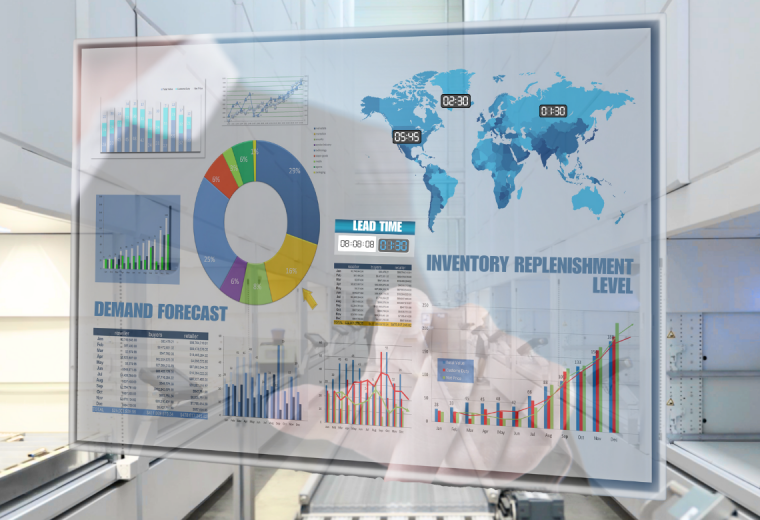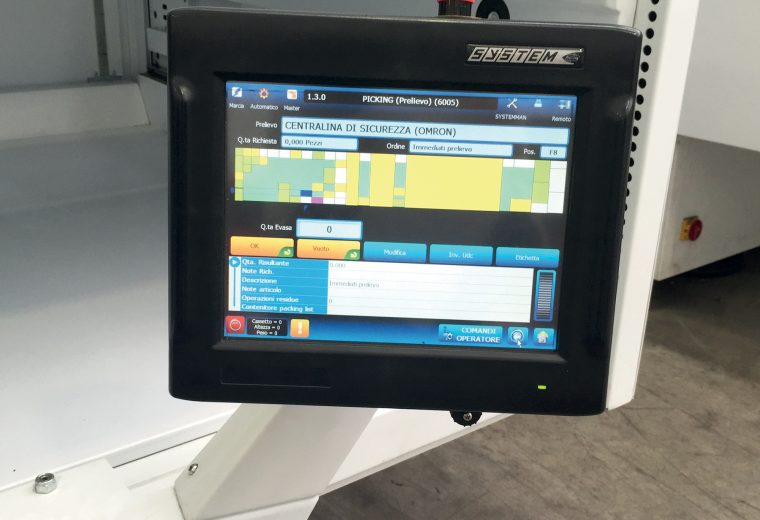101 Guide to Warehouse Management Systems (WMS)
A warehouse management system (WMS) is a software solution that offers a comprehensive view of your inventory and helps you manage your warehouse operations.
It offers a wide range of benefits, from boosting picking accuracy by assigning your warehouse operators the best picking routes to tracking inventory in real-time.
We’ll explain all you need to know about warehouse management systems, from how they work to different types, and share our intelligent and advanced WMS at Modula.
What Is a Warehouse Management System (WMS)?
A warehouse management system (WMS) is a software solution designed to help manage inventory and integrate with different technologies, such as barcode scanning, RFID technology, cloud computing and historical data and reporting.
A WMS provides your warehouse operators with full visibility into your inventory while managing warehouse processes from receiving to distribution and data collection.
Consider a WMS as the brain of the warehouse — the supervision and control system that manages the different warehouse operations that take place within the entire facility.
In fact, one of the main strengths of a WMS lies in its ability to integrate with other business management systems, such as Enterprise Resource Planning (ERP) and Document Management System (DMS) systems, to control or respond to requests that take place along the supply chain.
In addition, a WMS can help you:
- Boost inventory accuracy
- Monitor your stock levels and item movement, thanks to advanced inventory tracking
- Improve your warehouse operators’ efficiency in picking processes, leading to faster order fulfillment and overall customer satisfaction
- Generate inventory, order and delivery reports
Warehouse Management System vs. Inventory Management System
While a WMS monitors warehouse processes such as receiving and storing items, picking and packing orders, an inventory management system (IMS) only tracks an accurate record of each SKU in the inventory, regardless of its location.
A WMS uses inventory management strategies, such as ABC classification, to guide warehouse operators where inventory should be placed. This strategic approach helps optimize the utilization of warehouse space, ensuring that high-demand products are easily accessible.
In addition, a WMS can help your warehouse operator decide which inventory should be sent out first, such as products that are close to their expiration date and help manage labor in the warehouse by tracking employee productivity.
On the other hand, an IMS is a software solution that only tracks stock levels, orders, sales and deliveries, when integrated with point of sale (POS) systems and shipping and logistics systems.
An IMS can also help with demand forecasting to optimize inventory levels by analyzing historical data and monitoring sales trends.
Lastly, another significant distinction between inventory management software and warehouse management software lies in their capacity to integrate with other software solutions.
While inventory management software typically serves as the initial step in warehouse management, it doesn’t necessarily integrate into other warehouse operations.
Warehouse management software, in contrast, easily integrates with various software platforms, such us ERP systems, transportation management software or order management systems, creating a synchronized and interconnected network of processes.
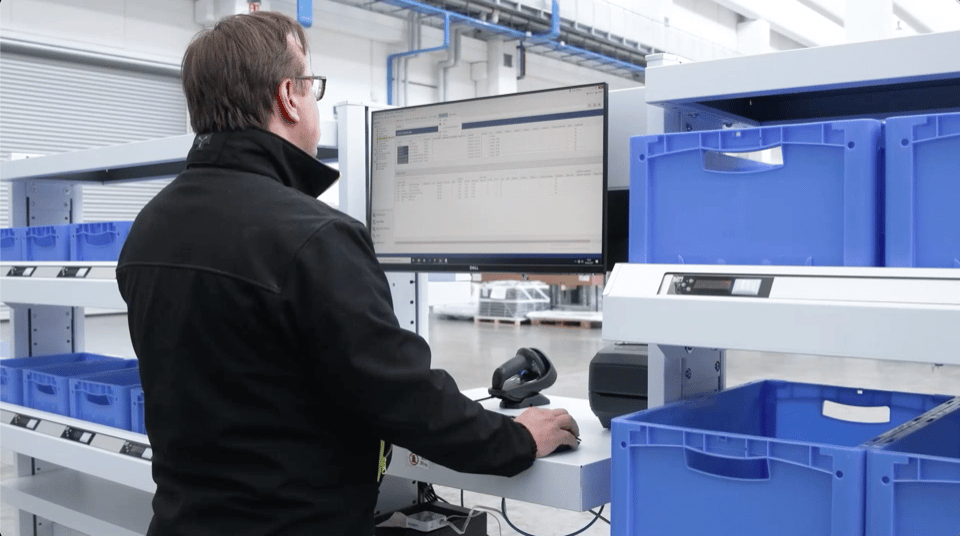
How Does a Warehouse Management System Work?
Here’s a step-by-step overview of how a WMS typically works:
- The WMS records goods received by the warehouse operator: When goods arrive at your warehouse, they are logged into the WMS by warehouse operators, who scan barcodes or RFID tags on the SKUs to accurately track each item’s quantity and location and quantity. This also ensures your inventory is updated in real-time and documentation errors are minimized or even eliminated.
- The WMS determines where each SKU should be stored: To make this decision, the WMS considers factors such as the item’s size, weight and frequency of use. For example, the WMS will instruct your warehouse operators to place fast-moving items near shipping areas to boost efficiency. Then, the location of each item is logged into the system.
- The WMS manages inventory: The WMS keeps track of the quantity, location, and movement of every item in the warehouse. When items are moved, picked, and sold, the inventory data in the WMS is updated in real-time, providing accurate information.
- The WMS generates a digital picking list: When an order comes in, the WMS utilizes the stored location data to guide your warehouse pickers along the most efficient path throughout the warehouse to pick the items, reducing the time traveled to pick the correct order.
- The WMS updates inventory in real-time: Once an order is picked and packed, the WMS updates the inventory to reflect that the items have been shipped.
- The WMS generates reports: The WMS collects data on your warehouse activities, which can be used to generate reports. These reports can provide insights into warehouse operations and help identify areas for improvement in your process, such as optimizing storage space utilization, enhancing picking and packing efficiency, and improving inventory turnover rates.
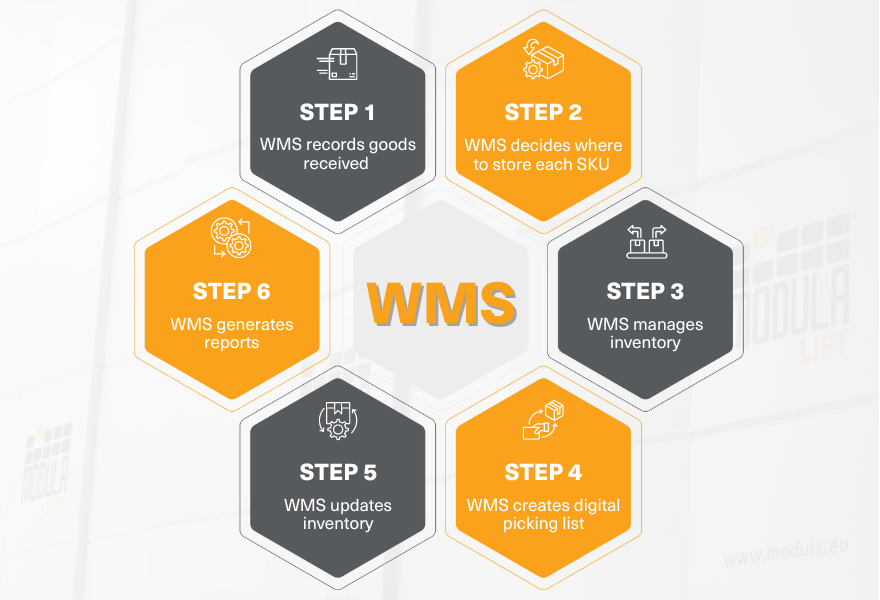
Types of Warehouse Management Systems
There are different warehouse management systems you can choose from, depending on your business’ needs and goals. The most common types of WMS include:
Integrated WMS
An integrated WMS is a type of solution that is typically an add-on of your existing ERP system — a comprehensive software system that integrates core business processes and functions, such as finance and accounting, customer relationship management and project management.
An integrated WMS is designed to work with other business processes, such as invoicing, sales and accounting, providing a comprehensive overview of your business operations.
This centralized approach can help you save money over time by reducing the hassle and cost of managing multiple warehouse tools.
Stand-alone WMS
A stand-alone WMS is a type of solution that is independent of other software solutions and specifically manages warehouse operations, such as managing inventory and generating reports.
A stand-alone WMS has limited functions for other aspects of your business, such as accounting, order processing and reverse logistics.
This type of WMS is more affordable than an integrated WMS, making it an ideal choice for startups.
Cloud-based WMS
A cloud-based WMS is a type of solution that is hosted on a remote server or data stored on the cloud, which can be accessed from anywhere, at any time.
This type of WMS is usually subscription-based and managed by a third-party service provider, allowing you to reduce upfront costs and ensure easy troubleshooting when software updates or bug fixes occur.
Supply Chain Module WMS
This type of WMS is a specialized solution integrated into a larger supply chain management system, offering seamless coordination between various supply chain functions, beyond warehousing.
This WMS handles all aspects of the supply chain, including customer relationship and vendor management, sourcing, manufacturing, and transportation.
This integration ensures real-time visibility across the entire supply chain, enabling better decision-making and resource allocation. That’s why the majority of 3PLs utilize it in conjunction with other warehouse management systems.
While the implementation of the Supply Chain Module WMS may require integration efforts, it provides significant benefits in terms of end-to-end supply chain optimization.
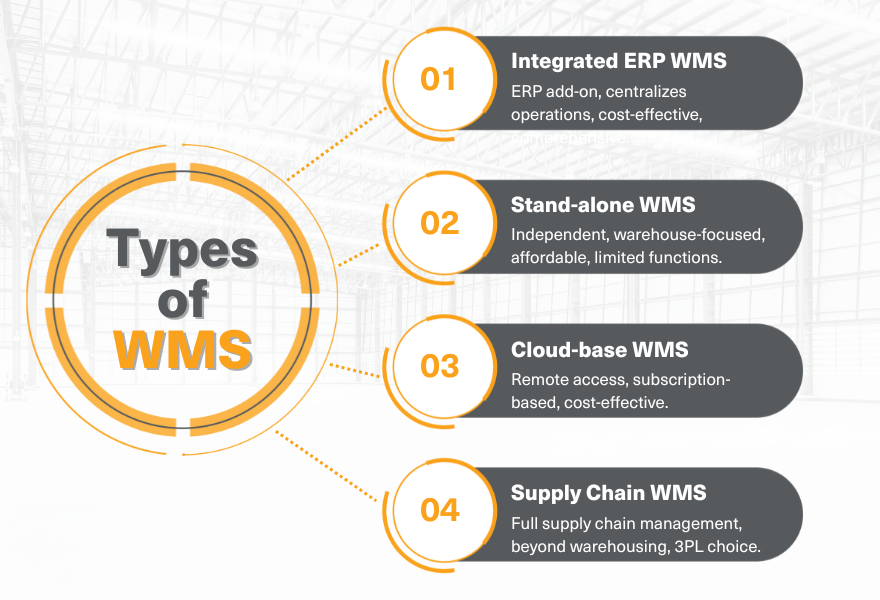
Benefits of a Warehouse Management System
All types of warehouse management systems provide different advantages, from improving inventory security to gaining accurate demand forecasts.
Modula’s WMS for Advanced Inventory Visibility
At Modula, we provide automated storage solutions and warehouse management systems that are designed to optimize space and improve picking and warehouse inventory management operations across a wide range of industries.
Meet Modula WMS — our intelligent and complete end-to-end solution for your business, built for operating Modula’s automated storage and retrieval systems. It can also be used for traditional and manually operated warehouses as a stand-alone software.
As one of the most advanced and user-friendly solutions available in the market, it works well with most Document Management System (DMS) and ERP systems, allowing tasks such as receiving, picking and storing products faster and more accurate.
Our WMS gives you real time control and a bird’s eye view of your warehouse tasks, thanks to a user-friendly PC interface.
Setting up is easy — all you need is a main computer that will act as the warehouse server and additional computers for your staff to access the system.
After installation, the WMS is ready for use and can smoothly connect with any type of corporate ERP system.
Check out the video below to see the Modula WMS in action:
What Is the Modula WMS Used For?
The Modula WMS can manage each SKU or product code with accuracy by connecting it to a specific compartment — space in a tray with dividers — of the Modula storage system.
Thanks to its simple integration, from each of these compartments, the WMS can manage and retrieve different information related to warehouse inquiries, such as:
- Maturity date
- Expiration date
- The status of individual SKUs, including storage status, validation status and product status
With the Modula WMS, data management is efficient. Each item (even from a single compartment) is always logged, including management status, picking and putting away details.
The WMS is also efficient in the case of structured and complex operations, such as inventory or order consolidation. When combined with different robotic peripherals or accessories, the WMS can optimize warehouse operations (which, very often, require significant time and human resources).
For example, order consolidation organized by the WMS can also take place on the fly with picking solutions such as the picking cart — the items in an order are consolidated while the order itself is being prepared, without intermediate phases.
The Modula WMS allows you to:
- Manage and monitor individual SKUs, record details, unique identifiers, SKU movement and stock levels
- Improve order handling and monitor and prioritize orders
- Oversee product location and movement in your facility and create location codes and labels
- Assign tasks to users, set their access and permissions and monitor their activity
- Track system performance, identify and fix errors, produce reports and alerts and analyze data
- Connect and exchange data with other systems and software via data input or file transfer
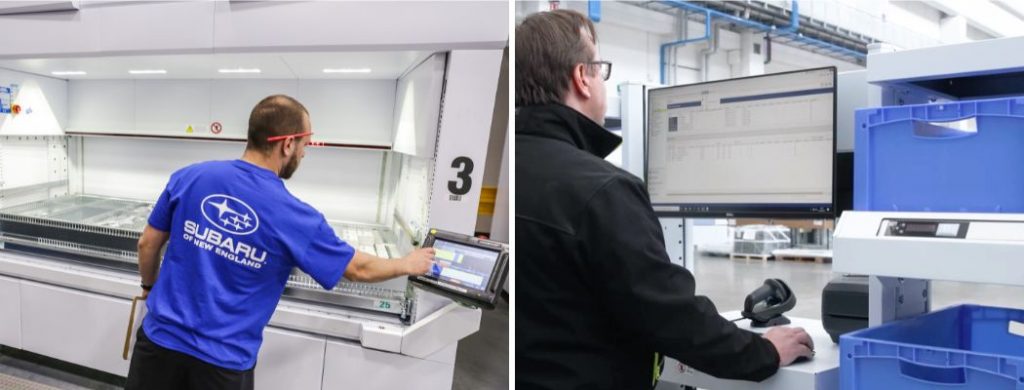
Key Advantages of Modula’s WMS
Here’s what you can expect when you implement Modula’s WMS in your warehouse operations:
Manage an Entire Storage Facility With a Single Modula WMS License
With Modula’s Warehouse Management System (WMS), companies can efficiently oversee and control all current and future Modula products using just one license, regardless of model, size, capacity or individual functions. In addition, the Modula WMS system can also manage manual areas.
Gain Full Control Over Multiple Storage Systems Located in Different Company Areas
Modula’s WMS allows you to have complete visibility and control over multiple storage systems across different company areas. Whether you have warehouses in various locations or distribution centers, this centralized WMS enables you to monitor and manage all operations from a single interface.
Let’s take an example of a company with several Modula units installed in different areas:
- One Modula automated storage solution to store raw materials and parts used in special manufacturing processes in the production area
- A Modula unit to store assembly parts or consumables
- A Modula unit for semi-finished or pre-assembled products
- A Module unit for finished products to be tested
- A Modula unit dedicated to finished products, already on pallets
- A Modula unit to store spare parts
With Modula’s warehouse management system (WMS), this company can manage all these machineries simultaneously in a coordinated and precise manner.
Managing machineries simultaneously is important, as it allows each department within the company to control its references following its own logic and based on their department’s rules and processes.
Integrate the WMS Easily With ERP Systems
Modula’s WMS system is designed for seamless integration with your chosen ERP, WMS or DMS, providing efficient management of orders and inventory between the existing ERP and Modula’s automated storage systems.
There are three common ways to set up this integration:
- Data exchange through Web service (Rest API)
- File exchange (xml, csv, text files)
- Data exchange via ODBC (intermediate database)
The choice of the data exchange method depends on several factors, including the client’s preference, the pre-existing warehouse management system, and familiarity with protocols. Selecting the most suitable method ensures smooth communication and optimized operations.
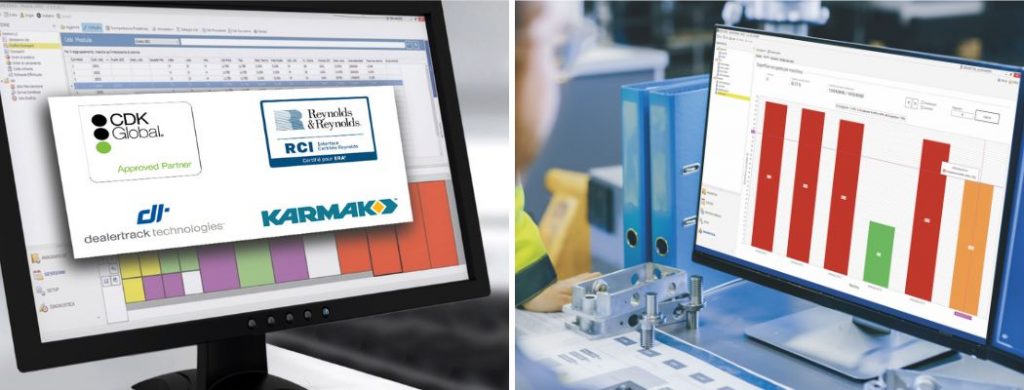
Install the WMS Easily in the Warehouse
Modula WMS has been designed to be simple and intuitive, even for individuals without specific IT skills. As a result, the learning curve is faster.
After importing and defining the master data and product locations, operators can access the control panel at any time and manage operations easily and efficiently.
In addition to standard reporting, the WMS can generate more detailed and specific reports for individual machines or the entire installed system.
With just a few clicks, operators can — for example, discover the percentage of space that could be further optimized, the actual volume occupied, the number of operations performed, the count of recorded errors and many other additional insights.
Manage Individual Items or SKUs in an Accurate and Timely Manner
Modula’s WMS offers precise control over individual items or SKUs. Operators can accurately track and monitor the movement of each item within the warehouse, ensuring efficient picking, packing, and shipping processes.
Each SKU can be managed with different logic, considering quantities and specific units of measurement. For example, an item can be handled in packs of 6, 12, or more, and counted in various units depending on specific needs.
This flexibility allows companies to efficiently control and manage products like water or food, which can be counted as pallet units, individual pieces, or packages based on storage and picking requirements.
With Modula’s WMS, companies can streamline their warehouse operations and optimize inventory management, leading to smoother workflows and increased productivity.
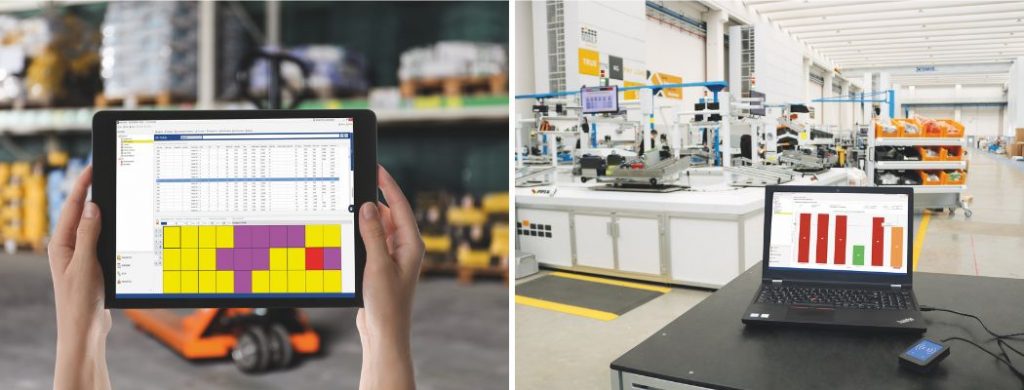
Manage Inventory as a Whole
When it comes to warehouse management, effectively managing the inventory is an important task that demands precise information and data. Modula WMS software offers the ideal solution to keep track of stock levels and create a comprehensive record of the whole inventory in a warehouse.
Operators can access the location, status, and quantity of materials stored in the warehouses at any given moment. In addition, all picking and replenishment operations, along with their histories, are easily accessible with just a few simple steps.
In addition, the WMS can generate precise and organized reports based on individual references or entire groups of locations.
For manual checks, operators can request information through the console. The process is quick and efficient: the Modula unit receives the information inquiry as if it were a regular order and presents the tray with the requested items. The operator can then count the products, confirming quantities and stock levels.
Ultimately, with Modula WMS software, companies can efficiently manage their entire inventory from a unified platform.
The system provides comprehensive insights into stock levels, order statuses, and replenishment needs, empowering warehouse managers to make data-driven decisions and optimize inventory control, ultimately reducing holding costs.
At Modula, our easy-to-install and operate WMS provides you with real-time data, helping your organization take control of your supply chain.
